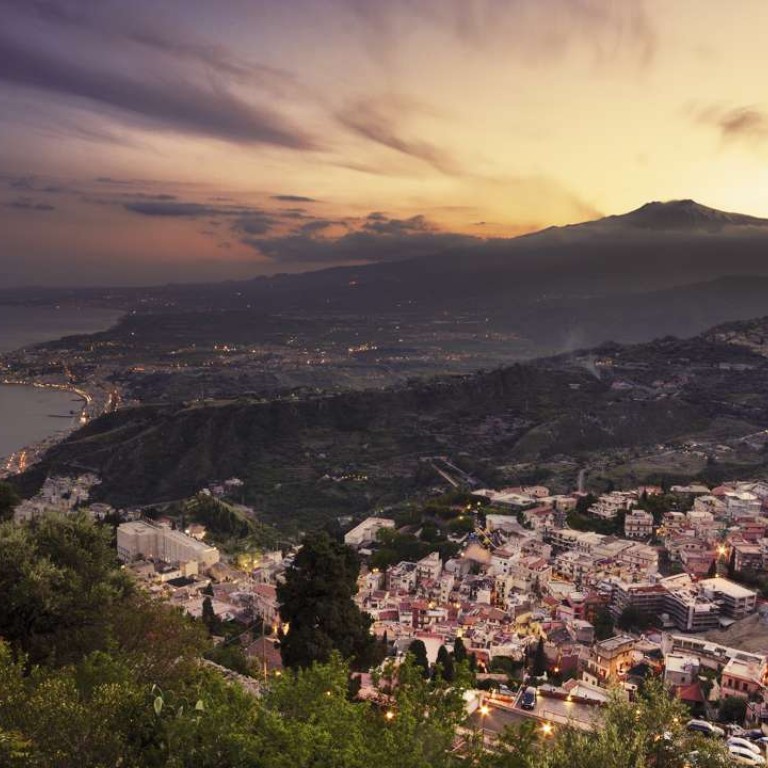
How to combine a wine-country tour with an adventure holiday
Kite surfing in Austria, canyoning and skiing in Slovenia, a Georgian mountain tour on horseback – there are plenty of ways to combine thrills with some chilled glasses of the local tipple
Spectacular sightseeing and farm-to-fork cuisine are two great reasons to holiday in wine country, but pastoral does not have to mean peaceful. Venture off the beaten wine trail and combine your passion for food and wine with a taste of danger.
Sicily, across the Strait of Messina from mainland Italy’s “big toe”, is dotted with Greek temples, Norman churches, Roman villas and Moorish architecture. In the west of the island, mighty Mount Etna dominates the landscape. The active volcano is Europe’s largest and its fertile foothills produce bountiful crops of fruits and nuts. Sicily’s long, cloudless summers combine with Mount Etna’s mineral-rich soil to create robust volcanic reds, like Etna rosso, and warm, complex nero d’avola.
Anna Maria Sorrentino, Italian travel specialist and president and founder of Shop Wine and Dine, recommends visiting Sicily’s farms in a 4x4 jeep. She says four-wheel drives are a great way to experience the island’s earthy gastronomy. A more thrilling way to survey Sicily’s estates is to hop aboard a helicopter. On a clear day, the vista stretches all the way to the boot of mainland Italy. Never mind that the view is sometimes distorted through hazardous yellow haze from Mount Etna’s sulphur-spewing craters.

Another way to wend your way through wine country is on two wheels. Cycling tours are almost as common in wine country as cellar doors: Sonoma, Tasmania, Burgundy and Alsace, to name a few. South Africa’s Cape of Good Hope is no exception. Anchored by the vibrant provincial capital of Cape Town, the hilly terrain of Stellenbosch is ideal for growing a range of grapes, such as chenin blanc.

The hills also set the scene for a two-wheeled adventure with a twist. The Paul Cluver Trail is an adrenalin-pumping 44km mountain biking circuit on the expansive De Rust Estate, which encompasses Paul Cluver Wines. Alex Dale, founder and co-owner of the Winery of Good Hope, suggests fuelling up for mountain biking with a braai and pairing the fire-grilled meat with Stellenbosch pinotage.
People who want to experience four seasons (and almost as many activities) in one day should add Slovenia to their bucket list. Slovenia is a mini wonderland of medieval villages, vineyards, castles, forests, lakes and Mediterranean beaches. From his home town near the capital, Ljubljana, wine writer Robert Gorjak says there are days when he can swim in the morning, stop for a leisurely lunch of smoked trout with a glass of malvasia istriana, and ski in the afternoon.
There are two ways to experience Slovenia’s wilderness, Gorjak says: either loll in its picturesque tranquillity, or launch right into it. Canyoning involves plunging, sliding, swimming and abseiling down crystal-clear waterfalls into turquoise pools, and zip lining above the trees. Adventurers can try Slovenia’s natural water parks around Bled, at the base of the Julian Alps.
In nearby Austria, water sports and wineries co-exist on Lake Neusiedl. Breezes from the so-called “Viennese sea” moderate temperatures at nearby vineyards, producing fresh, complex wines.

Those same winds pull kite surfers along the lake’s surface. Georg Schullian, head of PR for the Austrian Wine Marketing Board, describes kitesurfing as an exhilarating combination of surfing, windsurfing, wakeboarding and paragliding.
For more sedate Austrian water views, cruise the Danube to riesling country. The Wachau Valley is a Unesco World Heritage Site that feels frozen in time, with its well-maintained pastel-painted buildings.
In Georgia, eating and drinking is an extreme sport in itself. Georgia’s artisanal winemakers are reinvigorating the ancient tradition of making wine in terracotta pots called qvevri (pronounced kweh-vree). Some qvevri are as large as 3,500 litres, which is needed with the portion size and length of many Georgian feasts.
One way to work off all that hospitality is by touring the country’s highlands on horseback. Georgia’s equine tracks are steep and downright dangerous in parts, but brave riders are rewarded with incredible views of windswept hills and valleys, and soaring, ice-capped peaks. Georgia’s landscape is as dramatic and characterful as its wine and people.
